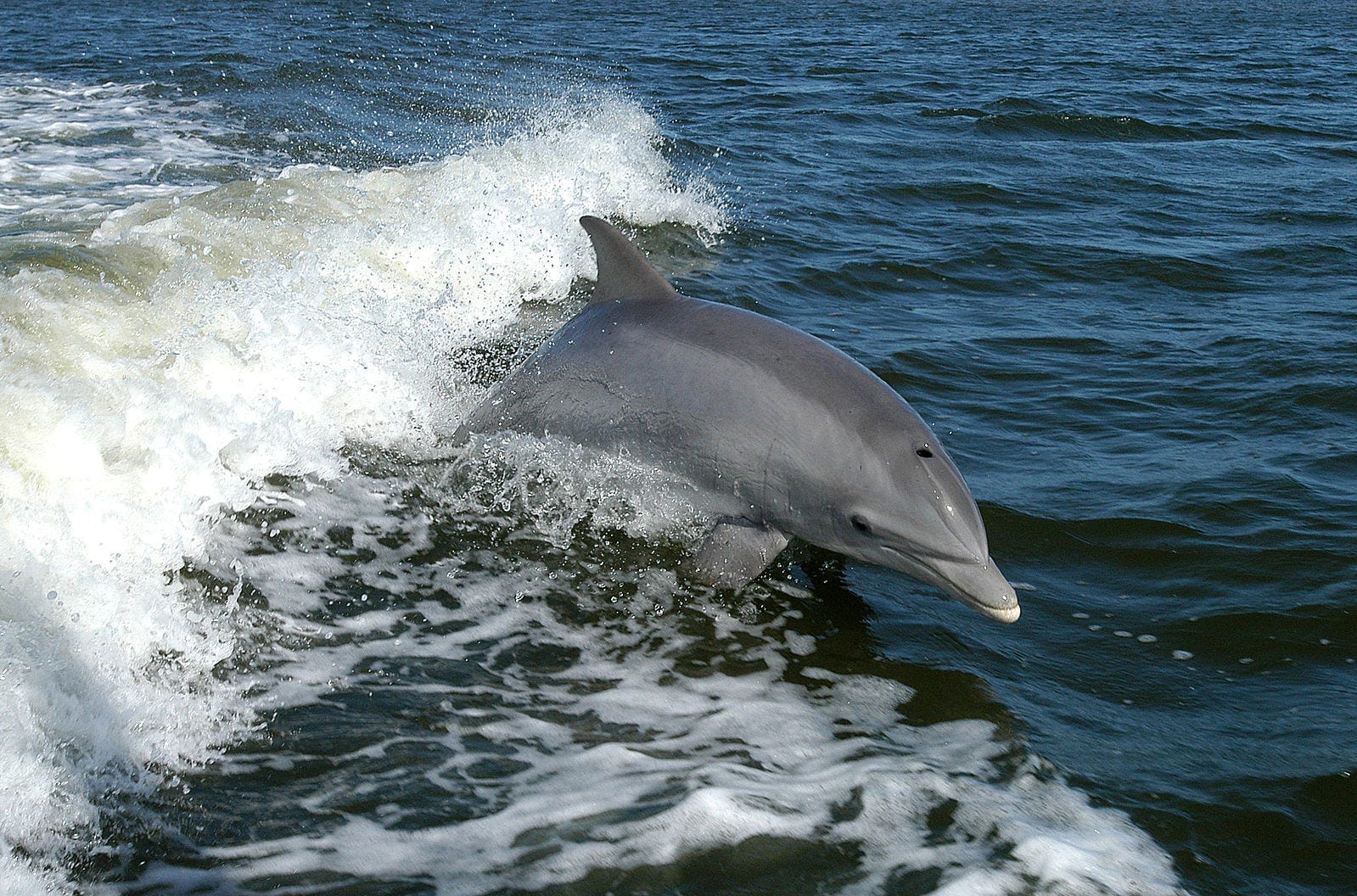
Unsurprisingly, there are still more stories about marine mammal play to share. This time, though, we’re taking a completely different evolutionary branch than that of the sea lions two weeks ago. Their closest land relatives are all Carnivora, while our group this time are instead related to even-toed ungulates (e.g. cattle, sheep, goats). As you can tell by the picture above, we’ll be discussing dolphins, called by some the ‘clowns of the sea’. Based on their playful antics, they live up to that nickname well.
Before we continue, let’s make clear what we’re discussing. When someone says ‘dolphin’, the image conjured to mind is most likely the animal above, the common bottlenose dolphin, Tursiops truncatus. However, that term can refer to several groups of animals that are closely related, but not all part of the same evolutionary descent. For the purposes of this story, we’ll be focusing on the oceanic dolphins, Family Delphinidae, which include the bottlenose as well as the largest species of dolphin, the orca or ‘killer whale’, Orcinus orca.
It is now well known that this group of animals is particularly intelligent, possibly even self-aware, so it should be no surprise that they have developed a variety of different play methods. At the simpler end, we have their jumping behavior while swimming. Called ‘porpoising’, this cuts down on drag because air is less dense than water. Similarly, following in a ship’s wake can reduce drag and energy expenditure as the ship does much of the work. Dolphins also enjoy playing with objects and making bubble rings, much like the sea lion my brother encountered. They are known for including other species in their play and this is not limited to humans. For example, you can see in the video below a wild dolphin playing with a golden retriever in a type of ‘catch me if you can’ game.
Dolphin Playing With Dog by brett H, YouTube
However, these interspecies interactions are not always so benign. For example, some juvenile dolphins have been seen chasing down and chewing on blowfish, but not necessarily eating them, treating them almost like a toy. This is not too exceptional, as most marine species use their mouths to examine and explore their environment as they lack grasping hands that allow for finer manipulations. Sometimes, dolphin behavior towards other species verges on harassment. For example, they have been known to drag birds underwater for fun, with no attempt to eat them in any way. Also, keep in mind that we aren’t making any moral judgements about this treatment. Humans have slowly developed customs for the treatment of non-human animals as part of our social contract. Thus, we find their perceived mistreatment to be unsettling or upsetting. But, other social animals have not necessarily developed similar sensibilities.
I bring this up because it is important to realize that, even though they do not seem to care about the effects of their play on others, this does not make their behavior wrong in their social world. Human social values are important to us and have helped us grow and thrive as a species, but it is the height of arrogance to expect it of other animals that have developed differently.
This is true of their interactions with humans as well as any other species. Even if a dolphin lacks malicious intent, it can seriously injure a human under the right circumstances. An average bottlenose dolphin is twice as long as a person is tall and almost 5 times the weight. Also, underwater is their natural environment and not ours. Dolphin play has its dark sides. The ‘clown of the sea’ moniker may still be apt considering the prevalence of the ‘evil clown’ in popular culture. People have been hurt by playing dolphins that may not understand the consequences of their actions. Some individuals have also deliberately attacked people trying to play with them.
It is easy to think of play as a completely innocent and wholesome activity, but remember that other species, even highly social ones, have not always developed some of the moral precepts that we take for granted. Even if the intent of the play behavior is not to harm, accidents do happen, and they become more likely when there is an imbalance of power (such as interactions between a marine and terrestrial species or when there are large differences in size). A playful nature does not make an animal a pet and such an error in judgement can have dire consequences. The appropriate response to this is not fear, but respect and understanding.
We’re already halfway through Season 6. I hope you are enjoying these stories. As always, please let me know what parts you enjoy as well as what you think could still use some improvement. I am always looking to hone my storytelling and your comments are always welcome.